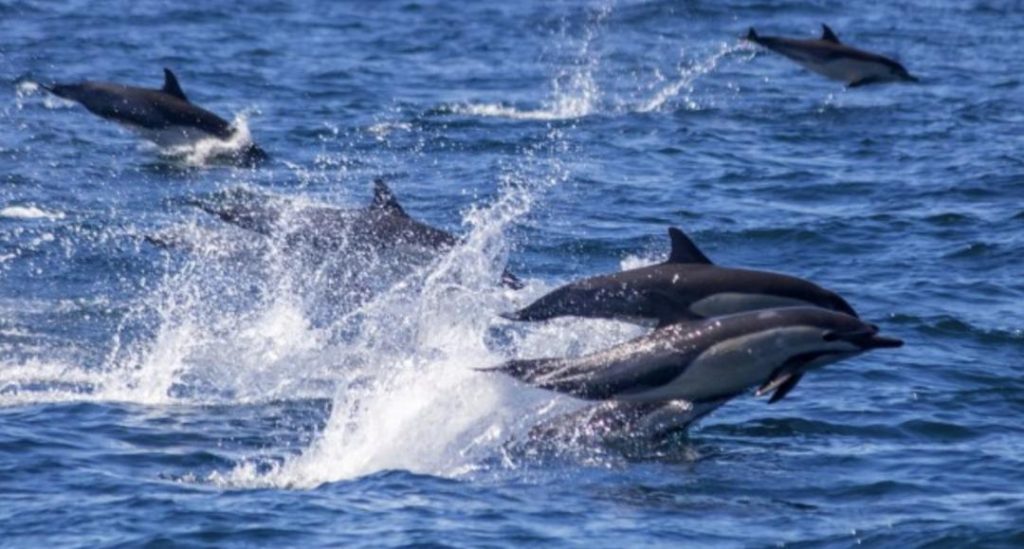
Dolphins & Whales Regularly Socialise with Each Other: Study
In a fascinating discovery, researchers from Griffith University have found that dolphins and whales frequently socialise with each other, engaging in playful interactions that are often mutual. The study, which analyzed videos and photographs of interactions between baleen whales and dolphins, covered 19 species across 199 separate events.
The findings of the study, published in the journal Marine Mammal Science, provide new insights into the complex social dynamics of these marine mammals. While it is well-known that dolphins are highly social creatures, this study reveals that they also form bonds with whales, which are typically thought of as solitary animals.
The researchers used a combination of observation and analysis to study the interactions between dolphins and whales. They reviewed videos and photographs of the animals, taken in various locations around the world, including Australia, the United States, and South Africa. The team also conducted interviews with experts and observers who had witnessed these interactions firsthand.
The study found that the most common interaction between dolphins and whales involved dolphins swimming near the whale’s head. This behavior was observed in a variety of contexts, including during feeding, socializing, and even during mating rituals. In some cases, the dolphins would swim alongside the whale, while in others, they would swim ahead or behind the whale.
One of the most striking findings of the study was the high level of mutualism between the dolphins and whales. In many cases, the interactions were reciprocal, with both species benefiting from the encounter. For example, dolphins have been known to help whales navigate through crowded waters or to locate food sources. In return, whales may provide dolphins with protection from predators or offer them a means of transportation.
Bottlenose dolphins were the most involved dolphin species in the study, accounting for over 60% of the interactions observed. This is likely due to their social nature and their ability to form close bonds with other dolphins. In fact, bottlenose dolphins are known to live in large groups, called pods, which are often led by a dominant individual.
The study also found that the interactions between dolphins and whales were not limited to a single species. In fact, the researchers observed interactions between dolphins and at least 19 different species of whales, including blue whales, humpback whales, and minke whales.
So why do dolphins and whales socialise with each other? According to the researchers, there are several possible explanations for this behavior. For one, socialising with other marine mammals may provide dolphins and whales with an advantage in terms of finding food or avoiding predators. Additionally, socialising may help to strengthen bonds between individuals and promote cooperation and mutual support.
The study’s findings have important implications for our understanding of marine mammal social behavior. They suggest that dolphins and whales are capable of complex social interactions, and that these interactions may be just as important to their survival as their interactions with other members of their own species.
In conclusion, the study of dolphin and whale socialisation has provided valuable insights into the complex social dynamics of these marine mammals. The findings suggest that dolphins and whales are capable of forming strong bonds with each other, and that these bonds are often mutual and reciprocal. As we continue to learn more about the social behavior of dolphins and whales, we may uncover even more fascinating examples of their complex and sophisticated social interactions.






